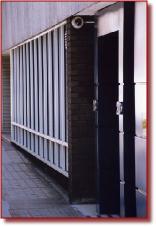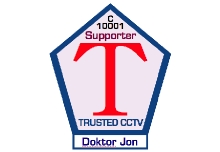 |
||
 |
||
![]()
![]()
![]()
![]()
![]()
![]()
![]()
![]()
![]()
![]()
![]()
![]()
![]()
![]()
![]()
![]()
![]()
![]()
![]()
![]()
![]()
![]()
![]()
![]()
![]()
![]()
![]()
![]()
![]()
![]()
![]()
![]()
![]()
![]()
![]()
![]()
![]()
![]()
![]()
IMPORTANT: No material may be reproduced, copied or redistributed from this site, without the express written consent of doktorjon.co.uk
All the detailed information on this site is provided in good faith; and as such, Doktor Jon does not accept responsibility for any consequential loss, injury or disadvantage resulting from any individual or organisation acting on the details contained herein.
© doktorjon.com 2004 - 2012
![]()
![]()
![]()
![]()
![]()
![]()
![]()
![]()
![]()
![]()
![]()
![]()
![]()
![]()
![]()
![]()
![]()
![]()
![]()
![]()
![]()
![]()
![]()
![]()
![]()
![]()
![]()
![]()
Please Note - Doktor Jon is currently upgrading his site, so you may see some layout changes on various pages, whilst the work is in progress.
Hopefully, the complete re-design and improvements, should be completed during 2012.
Whilst the "TRUSTED"© campaign is really about raising awareness of how to improve the quality of images and recordings, it is also vitally important that the opportunity is taken to develop a series of measurable 'Standards', to define whether a system is performing as defined in a comparative situation.
The development of a TRUSTED© Standard, is specifically about providing a relative measurement of the suitability of individual images, and also the quality and admissibility of their recordings.
If you recall in the DISE System Profile assessment, 'Deterrence' and 'Site Management' are key factors for relating to the function of critical parts (usually cameras) in a system.
For the purposes of developing a TRUSTED© Standard, it is safe to say that neither of these functions would have any significant bearing on the imaging and recording of material, that may later be submitted as evidence; in other words, these are operating factors that can be safely ignored.
As 'Incident monitoring' and subsequent 'Evidential recording' are the two major factors that dictate whether a TRUSTED© Standard can be developed, these are the two areas which need to be specifically defined for this purpose.
In practice, customised "check sheets" using a simple 'tick box' approach, will be produced by Doktor Jon to allow a system operator to assess whether their equipment is performing to the required standard. These will provide a measurable assessment of each individual component, and then the scores achieved can be used towards providing an overall global rating for the entire system.
Camera Assessment - In order for a cameras performance to be scored, it must be measured against a number of defined requirements, for example:-
Configuration - camera type, lens type, specific set up, Placement - location, height, vulnerability, Quality - resolution, sensitivty, noise levels, colour balance, overall image quality Target capture - lateral angle, inclined angle, period on screen, % target size on screen,
In practice, the first 'TRUSTED'© Camera Assessment has been specifically designed for use by 'untrained' CCTV system operators, rather than engineers or consultants.
Recording and Display Assessment - A record and display system must fulfil certain criteria in order to be considered not only fit, but also optimised for purpose (all exclusively motion triggered record systems will automatically fail the Standard, as will certain other configurations e.g. recording onto a non exclusive device such as a home PC).
Part of the purpose of developing a standard, is to disuade inappropriate and basic 'cost cutting' techniques, which can very easily compromise a systems overall performance
Record quality - Settings, compression, record resolution
Continuity - Images per second, ease and control of replay, duration / record capacity
Export of data - Copy method, copy format, backup options, removable media
Functionality - Ease of Use, technical suitability
Legal Considerations - Does the equipment comply with all statutory legal requirements?:-
Cameras - Have external cameras been installed as 'Permitted Development'? Overall - Data Protection Act, Human Rights & RIPA compliant? (if and when appropriate) Operator - Is licensing required for personnel under the Private Security Industry Act It is proposed that in order to achieve TRUSTED© status, a system assessment must result in a score of at least 75% overall, and for those achieving 90% +, they will be classified as "Diamond" TRUSTED©. Using this approach, system operators (end users) will be able to demonstrate compliance to a minimum standard, and also be easily able to identify operational shortcomings in their existing set up; so if they fail the first time, once the shortcomings are corrected, there is no reason why they should not achieve TRUSTED© status at a subsequent retest.
Subject to feedback, further work will be carried out on developing this section.
STOP PRESS:- In the last quarter of 2010, a significant amount of additional TRUSTED work has been progressed which is currently undergoing independent review. The documents and seperate 'microsite' are due to be formally announced early in 2011.
If you have any specific requests for more information, comments or suggestions for inclusion in this project, please let me know:- e-mail to: info[at]doktorjon.co.uk

How can you tell if your
Video Surveillance System
is 'TRUSTED'©
As has already been mentioned, the project will be structured into two distinct phases:-
Phase 1 - Developing a range of assessments and support documents to evaluate existing installations.
Phase 2 - Defining key operational standards for equipment, systems and procedures





